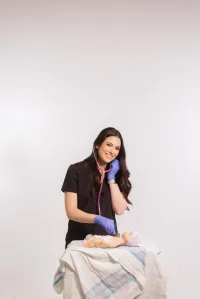
Welcome to Amanda's NICU Education




Hi! My name is Amanda. I'm a NICU nurse, Clinical Nurse Specialist, NICU Educator... basically your NICU BFF. If you want to talk NICU, I'm here for you! I love everything about NICU nursing and I'm eager to learn and share my knowledge with all my NICU friends.
I have been a NICU nurse since 2009 I am currently a Clinical Nurse Specialist in a Level IV NICU in Los Angeles.
I am passionate about educating the next generation of NICU nurses. I share my knowledge through platforms such as Instagram and Facebook and am excited to have you here on my website!
Click on the button below to sign up for my newsletter filled with NICU education and tips for all experience levels.

Not very many people love taking tests but as a self-acclaimed "forever student" who has taken (and passed) five different certification exams I am no longer afraid of tests! "Way to brag", you might be thinking but I want to help YOU pass your certification exam too!
Introducing Amanda's RNC-NIC Success digital course - your ultimate study companion!
Gain unlimited, on-demand access for life, ensuring you're primed to ace your certification exam.
I'm here to help you succeed and I can't wait for you to share with me that you PASSED the RNC-NIC EXAM!!!









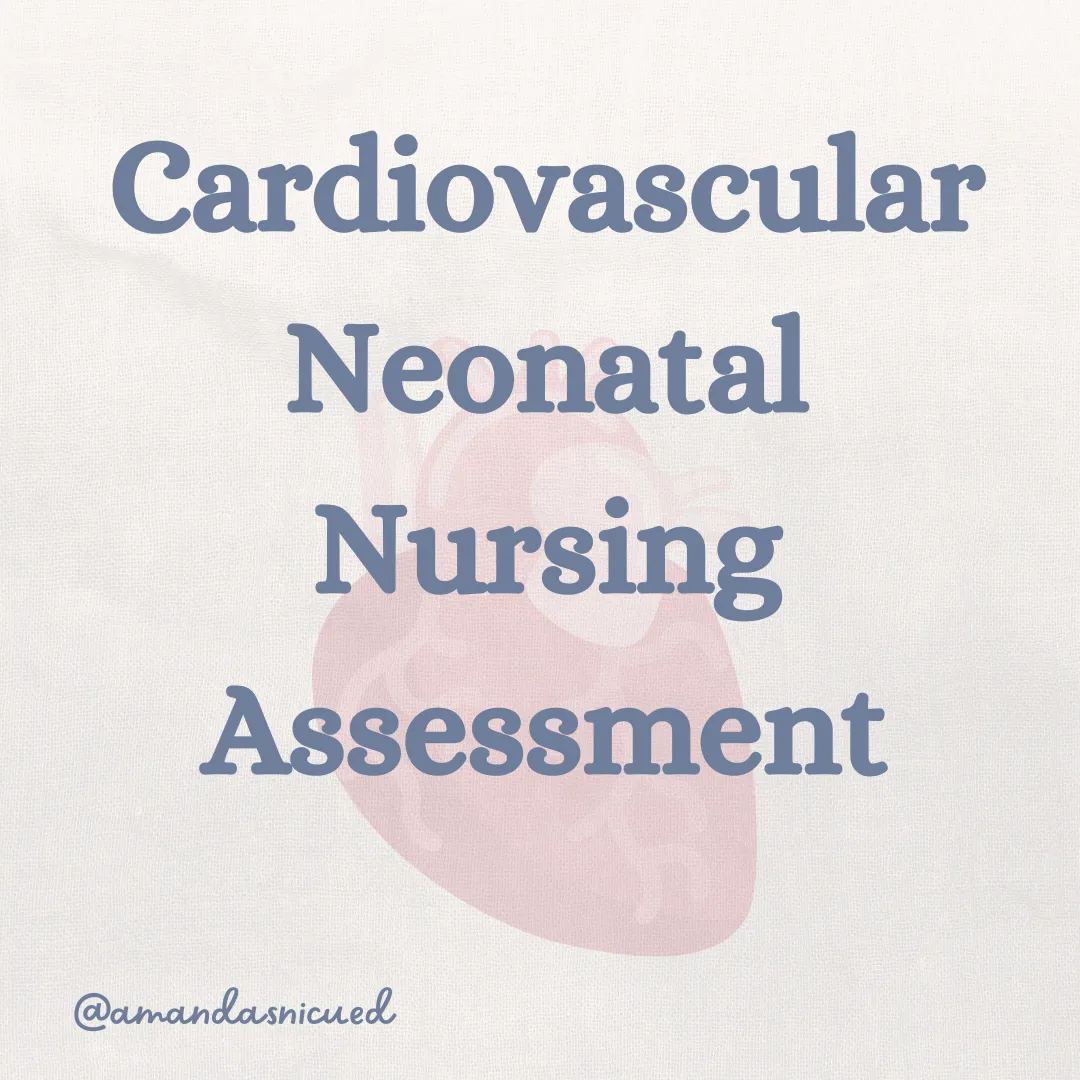
Cyanotic Congenital Heart Disease
Cyanotic Congenital Heart Disease
As NICU nurses, we've all experienced that crucial moment - a slight tinge of blue in a newborn that triggers our clinical suspicion. Understanding CCHDs is fundamental to our practice, affecting not just our assessments but our ability to advocate for our tiny patients.

Cyanotic congenital heart defects (CCHDs) are a group of critical heart conditions present at birth that result in decreased oxygenation of the blood, leading to cyanosis—a bluish discoloration of the skin. Early recognition and intervention are essential to improving outcomes for affected newborns.
Understanding CCHDs: The "Terrible T's" and Beyond
A helpful mnemonic for remembering some of the primary CCHDs is the "Terrible T's":
Truncus Arteriosus: A single arterial trunk supplies both systemic and pulmonary circulations due to the failure of the aorta and pulmonary artery to separate.
Transposition of the Great Arteries (TGA): The pulmonary artery and the aorta are switched, creating parallel circulations that require mixing for survival and early intervention.
Tricuspid Atresia: The tricuspid valve is absent or malformed, preventing normal blood flow between the right atrium and right ventricle.
Tetralogy of Fallot (TOF): A combination of four defects: ventricular septal defect (VSD), pulmonary stenosis, right ventricular hypertrophy, and an overriding aorta.
Total Anomalous Pulmonary Venous Return (TAPVR): The pulmonary veins fail to connect normally to the left atrium, leading to improper circulation of oxygenated blood.
Other Notable CCHDs:
Ebstein’s Anomaly: The tricuspid valve is displaced downward, affecting right ventricular function and leading to cyanosis and heart failure.
Hypoplastic Left Heart Syndrome (HLHS): The left-sided heart structures are underdeveloped, impairing systemic blood flow.
Pulmonary Atresia: The pulmonary valve does not form properly, blocking blood flow from the right ventricle to the lungs.
Double Outlet Right Ventricle (DORV): Both the aorta and pulmonary artery arise from the right ventricle, resulting in mixed blood circulation.
For a more in-depth exploration of these conditions, you can refer to my previous blog posts using the button below:
Recognizing CCHDs: A Nurse's Crucial Role
Signs of CCHDs are often nonspecific soon after birth, emphasizing the need for heightened clinical suspicion. Infants presenting with shock or hypoxia should be evaluated urgently, as delayed diagnosis is associated with poor outcomes. Early detection of CCHDs is crucial, and nurses play a vital role in assessing newborns. Key assessment points include:
Skin color: Persistent cyanosis can be an indicator of a CCHD.
Respiratory status: "Comfortable Tachypnea," grunting, or retractions may be present.
Heart sounds: Murmurs, abnormal heart sounds, or weak pulses can be a sign of a CCHD.
Oxygen saturation: Pulse oximetry readings below 95% warrant further evaluation.
Feeding difficulties: Poor weight gain or fatigue during feeding can signal cardiovascular compromise.
As nurses, our assessment is so crucial. I always think of this story and how the “very attentive nurse” identified something was wrong which ensured this baby received needed treatment.

I love this story because it highlights several crucial aspects of neonatal nursing:
The value of systematic assessment - The nurse noticed something wasn't quite right during a routine newborn check
The importance of speaking up - Even with a seemingly healthy baby, the nurse felt empowered to voice concerns
The critical timing of intervention - Early recognition led to timely surgical intervention
Has there been a time when you had a 'gut feeling' something wasn't right with a baby. What physical signs triggered that instinct? How did you advocate for your patient?
CCHD Screening: Updated AAP Algorithm
To enhance early detection, the American Academy of Pediatrics (AAP) recently updated its algorithm for CCHD screening, emphasizing:
A lower limit of an acceptable oxygen saturation of ≥95% in both the pre- and post-ductal measurements.
Only one retest following an indeterminate result.
The screening should not be performed while infants are on supplemental oxygen.
If screening is abnormal, additional workup includes echocardiography and neonatal cardiac consultation.
Read more about the updated AAP algorithm here:
AAP CCHD Screening 2024 Recommendation
Supporting Families: Education and Resources
A diagnosis of a congenital heart defect is overwhelming for parents. Nurses and healthcare providers must offer emotional and educational support:
Explain the diagnosis and treatment plan in clear, understandable terms.
Encourage bonding through skin-to-skin contact and participation in care activities.
Prepare parents for home care, including signs of respiratory distress, feeding strategies, medication management, and CPR instruction
Coordinate with social workers and case managers to assist with financial concerns, insurance, and follow-up care.
Provide resources, such as support groups, online communities, and organizations like the Congenital Heart Public Health Consortium.
Helpful Organizations:
The American Heart Association and The Children’s Heart Foundation: Offers information about CHD, including symptoms, treatment, and risks.
Mended Little Hearts: A program of Mended Hearts, Inc., a non-profit organization that offers peer-to-peer support.
Kids with Heart National Association: A volunteer group that matches parents with other parents of children with similar heart conditions.
Pediatric Heart Network: Offers resources and support for families of children with CHD.

Early detection of CCHDs through nursing assessments, standardized screening protocols, and timely interventions is crucial for improving neonatal outcomes. Supporting parents with education and resources ensures that families are empowered to care for their child beyond the hospital setting.
🫀
Amanda
Missed my other newsletters? Click here to read them!
Let's Study Together! Join my Certification Course
References:
Oster ME, Pinto NM, Pramanik AK, et al. Newborn Screening for Critical Congenital Heart Disease: A New Algorithm and Other Updated Recommendations: Clinical Report. Pediatrics. 2025;155(1):e2024069667. doi:10.1542/peds.2024-069667
Singh, Y., & Lakshminrusimha, S. (2021). Perinatal Cardiovascular Physiology and Recognition of Critical Congenital Heart Defects. Clin Perinatol, 48, 573–594.
Brown, K. M., Jones, M. B., Moore, L., & Meliones, C. (2019). Advanced Nursing Practice in Pediatric Cardiac Critical Care in Critical Heart Disease in Infants and Children, Third Edition. Elsevier.
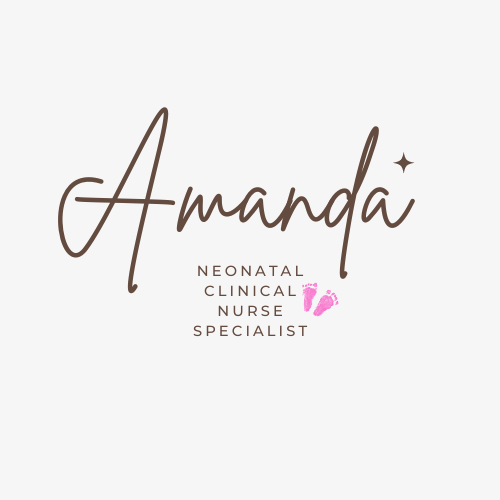

December 2023 Certification Review Webinar
NICU Certification Review


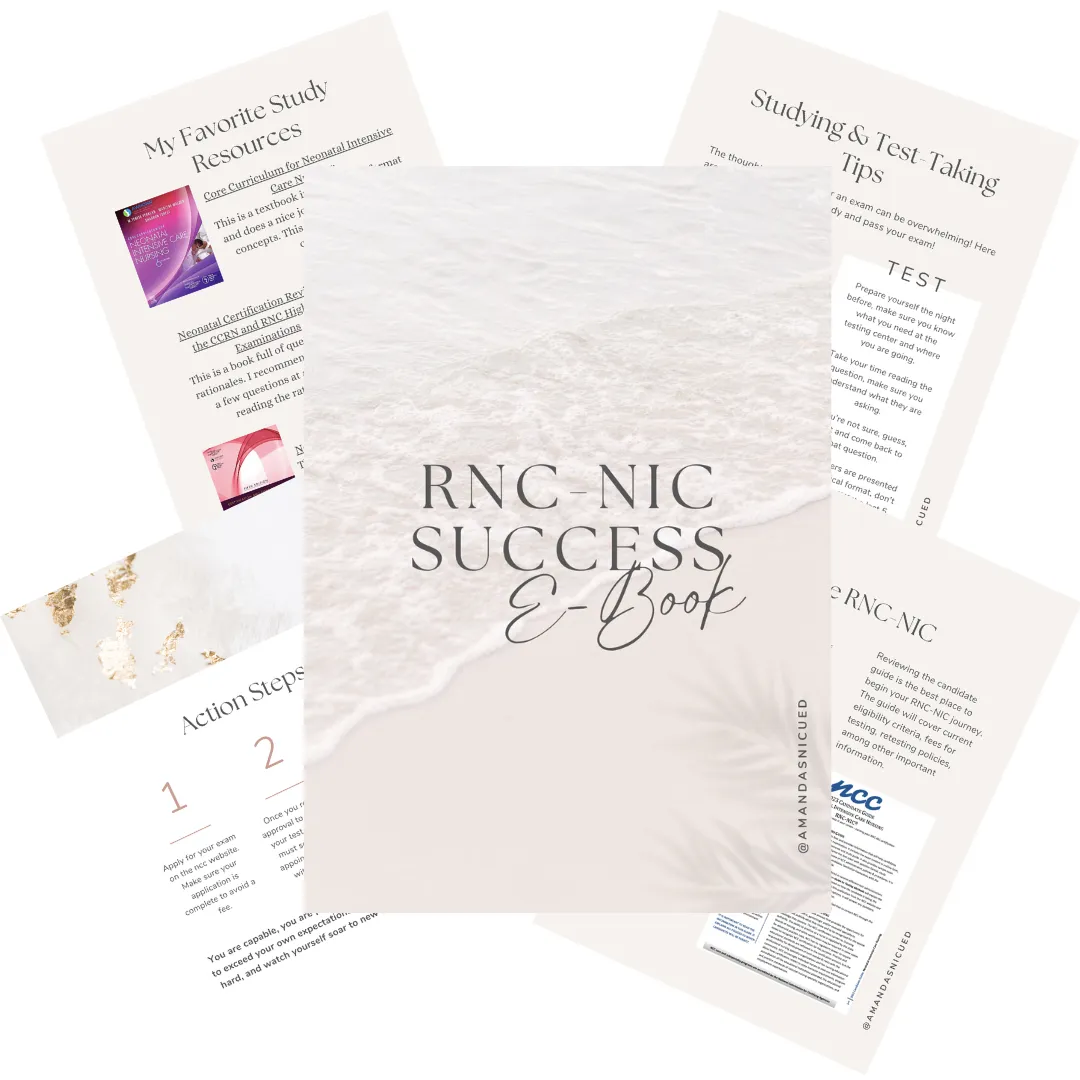
Ready to kickstart your journey to becoming a certified NICU nurse?
Look no further!
Grab my FREE E-Book packed with essential study and test-taking strategies for the RNC-NIC.
In the E-Book I give you the resources you need including the link to access the candidate guide, several types of books to study from, some of my favorite strategies, an outline of the content you should review, and a blank calendar for you to make your study plan!
Frequently Asked Questions About the RNC-NIC exam

What is the RNC-NIC?
The RNC-NIC is a competency-based exam that tests the specialty knowledge of nurses in the United States & Canada who care for critically ill newborns and their families.
The RNC-NICU is a nationally recognized certification that recognizes the registered nurse for their specialty knowledge and skill.
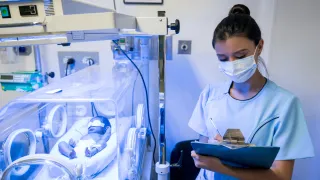
Who can take the RNC-NIC exam?
Nurses can take this exam after a minimum of two years experience in the NICU caring for critically ill newborns and their families.

Which books should I use?
I'm glad you asked! There are many excellent books to help you prepare for the RNC-NIC, I gathered ande describe each of them for you in my FREE e-book.
Is there a course to help me study?
Yes! Many hospitals host their own certification course and there are a few online courses. See my RNC-NIC test taking tips E Book for more information
What happens if I don't pass the exam?
If you don't pass the exam on your first try you can try again after 90 days. You will have to reapply after 90 days and pay a retest fee. There is no limit to the number of times you can take the exam (however a candidate can only sit for the exam twice per year).
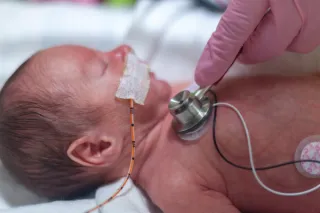
Can I make more money if I take the RNC-NIC exam and get certified?
Yes! Many hospitals provide a raise or a bonus for nurses with specialty certifications. Hospitals also typically hire at a higher base salary when nurses have a certification.

Find me @amandasnicued on these channels or Email me
hey nurses don't miss out
© Copyright 2024. AmandasNICUEd. All rights reserved. | Terms & Conditions | Privacy Policy Contact: [email protected]

